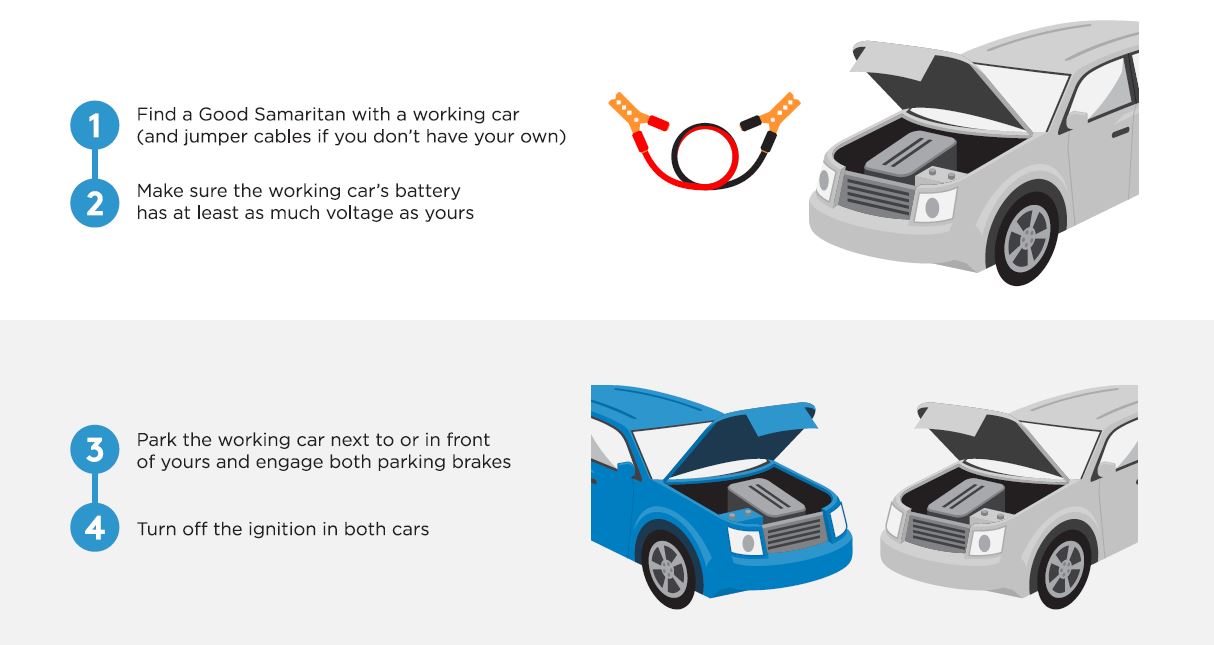In this informative article, you will discover a step-by-step guide on how to effectively use jump starters. Whether you've found yourself with a dead car battery or you simply want to be prepared for any unforeseen circumstances, understanding how jump starters work is essential. We will take you through each necessary step, providing clear and concise instructions that will have you confidently using jump starters in no time. By the end of this article, you'll be equipped with the knowledge and skills to safely jump-start a vehicle and get back on the road quickly and easily.

Step 1: Choosing the Right Jump Starter
When it comes to choosing the right jump starter for your vehicle, there are a few things you need to consider. First, think about the size of your vehicle's engine. Different jump starters are designed to handle different engine sizes, so it's important to choose one that is compatible with your vehicle. Next, check the type of battery your vehicle has. Some jump starters are specifically designed for lead-acid batteries, while others work with lithium-ion batteries. Make sure to choose a jump starter that is compatible with your battery type. Additionally, evaluate the power of the jump starter. This is usually measured in peak amps or cranking amps, and it determines how much power the jump starter can deliver to start your vehicle. Lastly, consider any additional features that may be important to you. Some jump starters come with built-in air compressors or USB ports, which can be useful in certain situations.
Step 2: Preparing for Jump Start
Before you jump start your vehicle, it's important to take some safety precautions. Make sure you are in a safe location away from traffic, and turn off the ignition of both vehicles involved in the jump start. You should also put on safety gear, such as gloves and safety goggles, to protect yourself from any potential hazards. Once you are ready, locate the battery of your vehicle. In most cars, the battery is located under the hood, but in some vehicles, it may be located in the trunk or under a seat. Take a moment to inspect the battery for any signs of damage, such as leaks or corrosion. Additionally, check for loose cables and ensure they are properly connected to the battery terminals.

Step 3: Understanding Jump Starter Components
To effectively use a jump starter, it's important to understand its components. First, identify the power source of the jump starter. Most jump starters are powered by rechargeable batteries, while some may have built-in capacitors that store energy. Locate the cables and clamps attached to the jump starter. These cables are responsible for transferring power from the jump starter to your vehicle's battery. Finally, find the control panel, which may include buttons or switches to activate the jump starter and monitor its performance. Learn about any additional accessories that may be included with the jump starter, such as a carrying case or a charging cable.
Step 4: Connecting the Jump Starter
Now it's time to connect the jump starter to your vehicle's battery. Start by positioning the jump starter and the vehicle close to each other, but make sure they are not touching. This will prevent any accidental damage or sparks. Handle the cables with care, making sure they do not come into contact with any moving parts or hot surfaces. Begin by connecting the positive (+) clamp of the jump starter to the positive terminal of your vehicle's battery. The positive terminal is typically marked with a plus sign or the letter "P." Once the positive clamp is secured, attach the negative (-) clamp of the jump starter to a metal part of the vehicle's engine block or chassis. This provides a grounding point and helps prevent any sparks during the jump start.

Step 5: Starting the Engine
Before starting the engine, double-check all the connections to ensure they are secure. Make sure the cables are not in contact with any moving parts and that the clamps are properly attached to the battery terminals or the grounding point on the vehicle. Next, turn off all vehicle accessories, such as lights, radio, and air conditioning, to minimize the power load on the jump starter. Now, start the vehicle's engine. In most cases, the engine should start smoothly. However, if it doesn't start immediately, do not crank the engine continuously for more than a few seconds to avoid overloading the jump starter. Monitor the jump starter and engine during this process to ensure everything is functioning as it should.
Step 6: Disconnecting the Jump Starter
Once your vehicle's engine is running smoothly, let it idle for a few minutes to charge the battery. This will help restore the battery's charge and ensure a more reliable start in the future. After the engine has idled for a sufficient amount of time, turn off the vehicle's engine. Now it's time to disconnect the jump starter. Start by removing the negative (-) clamp from the engine block or chassis. Next, detach the positive (+) clamp from the battery terminal. Make sure to handle the clamps with care and avoid touching any metal surfaces while doing so. Always prioritize safety when handling electrical components.
Step 7: Post-Jump Start Care
After successfully jump starting your vehicle, it's important to perform some post-jump start care. Begin by checking the condition of the battery. Look for any signs of damage or leakage, and ensure it is securely connected to the battery terminals. If you notice any issues or abnormalities with the battery, it may be necessary to consult a professional for further inspection. Additionally, inspect the jump starter itself for any damage or signs of wear. If you notice any cracks, frayed cables, or other issues, it may be time to replace or repair the jump starter. Finally, store the jump starter properly in a cool and dry place, away from direct sunlight and extreme temperatures.
Common Mistakes and Troubleshooting Tips
While jump starting a vehicle is a relatively simple process, there are some common mistakes that people often make. One common mistake is placing the clamps on incorrect terminals. Always ensure that the positive clamp is attached to the positive terminal, marked with a plus sign or the letter "P," and that the negative clamp is attached to a metal part of the engine block or chassis. Another mistake to avoid is reverse clamp connection. This means connecting the positive clamp of the jump starter to the negative terminal of the vehicle's battery and vice versa. This can result in sparks and potential damage to the jump starter or the vehicle's electrical system. If the engine doesn't start after attempting a jump start, there may be other issues at play, such as a faulty starter motor or a dead battery that cannot be revived. In such cases, it is advisable to enlist the help of a professional mechanic to diagnose and address the problem.

Safety Tips when Using Jump Starters
Jump starters are powerful tools that can pose certain risks if not handled correctly. To ensure your safety, it's important to follow some safety tips. First and foremost, read and understand the instruction manual of your jump starter. This will provide important information about its specific usage, safety guidelines, and any precautions you need to take. When using a jump starter, always wear appropriate safety gear, such as gloves and safety goggles, to protect yourself from potential hazards. Additionally, avoid contact with sparks or open flames while working with a jump starter. Sparks can ignite fuel vapors or other flammable materials, so it is important to work in a well-ventilated area and away from any potential sources of ignition. Finally, make sure to store the jump starter properly when not in use. Keep it in a cool and dry place, away from children and pets, to prevent any accidents or damage.
Additional Tips for Optimal Results
To ensure optimal results when using a jump starter, consider these additional tips. Keep your jump starter fully charged at all times, as a fully charged jump starter will provide maximum power when you need it. Regularly check the charge level of your jump starter and recharge it as needed. It's also important to perform regular maintenance on your jump starter. This includes checking the cables for any signs of wear or damage, cleaning the clamps to remove any dirt or corrosion, and inspecting the control panel for any issues. By taking care of your jump starter, you will increase its lifespan and ensure its reliability. Finally, practice using the jump starter in a controlled environment, such as your driveway, before you actually need to use it in an emergency. This will help familiarize you with the process and give you confidence in using the jump starter when it really matters. If you ever find yourself facing unfamiliar situations or encountering difficulties with jump starting your vehicle, it is always wise to seek the assistance of a professional who can provide expert advice and guidance.

